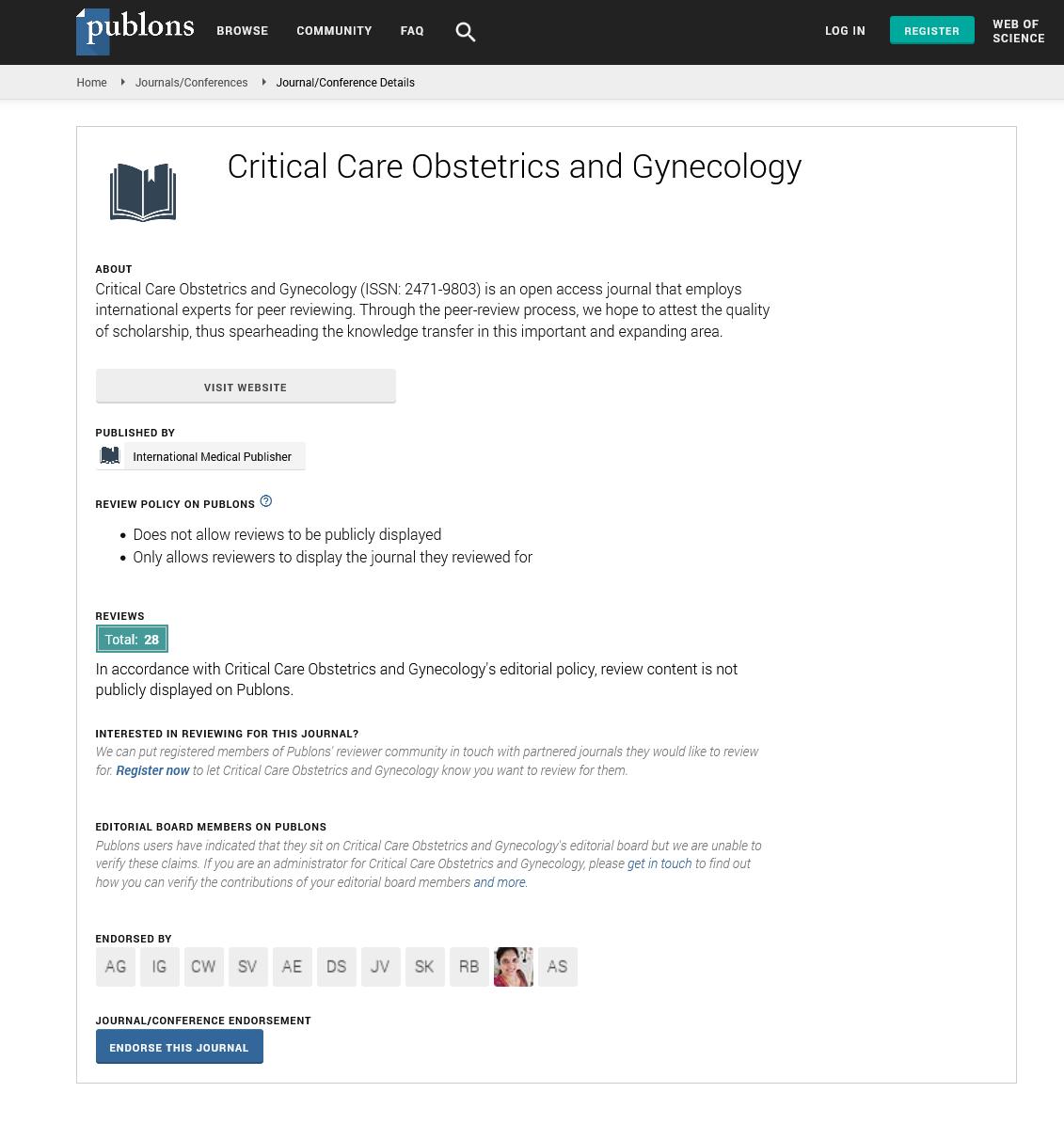Abstract
Assessment of the Level of Patient Satisfaction with Obstetric Sonography in Port Harcourt, Rivers State, Nigeria
Background: The importance of quality of healthcare delivery has drawn global attention and as such, healthcare providers are continuously updating their knowledge to meet the ever-rising challenges of patient’s management. In every setting, good patients care is the pivot on which healthcare policies revolve, therefore, patients care is the primary responsibility of every hospital making patient’s satisfaction a topmost concern. Patient satisfaction is a strong indicator used for evaluation of the quality of health care delivery, and as such needs to be frequently studied for the smooth functioning of the health care system. This study was designed to assess the level of patient’s satisfaction with obstetric ultrasound in Port Harcourt, Rivers State, Nigeria. Materials and methods: The prospective cross-sectional study design was adopted for this study. A convenient sample size of 200 subjects referred for obstetric ultrasound scans was studied using structured questionnaires. The ethical approval and permission to conduct this study were obtained from the Research and Ethics committee of Image Diagnostic Center Port Harcourt, Rivers State, Nigeria. All procedure of this study was adequately explained to the subjects and their consents were properly sought. The information obtained from them were treated with a high level of confidentiality and used for the purpose of this study. This study was conducted in the radiology department of Image Diagnostic Center Port Harcourt, Rivers State between December 2017 and February 2018. Results: Greater numbers of the respondents were within the age group 25 to 34 years of age 60.5% (n=121), followed by 35-44 years of age 34.5% (n=69) and the least were within the age group 16 to 24 years of age 5% (n=10). Out of 200 respondents, 99.5% (n=199) of the respondents were females and the remainder 0.5% (n=1) was male. Majority of the respondent had tertiary education 66.0% (n=130) and the least had primary education 2.5% (n=5). The correlation analysis for educational levels and level of satisfaction showed a statistically significant negative correlation (r=-0.353, P=0.000). With regard to the respondent’s occupation, Civil servants were highest at 24% (n=48), and the least were students 1.5% (n=3). With regard to the instructions by sonographers and courtesy of medical staff, 55% (n=110) were satisfied with the instructions and 7.0% (n=15) were dissatisfied and accounted for the least respondent. There was a positive statistically significant correlation with this variable and the levels of respondent’s satisfaction with (r=0.199, p=0.005). Conclusion: There was a high level of patient satisfaction with obstetric ultrasound in the Radiology department of Image Diagnostic Center, Port Harcourt Nigeria. Christian’s preponderance was noted and Civil servants constitute the highest number of the participants. Greater numbers of the determinants of satisfaction showed statistically significant correlation and relationship with age and education.
Author(s):
Michael Promise Ogolodom
Abstract | Full-Text | PDF
Share this

Google scholar citation report
Citations : 148
Critical Care Obstetrics and Gynecology received 148 citations as per google scholar report
Critical Care Obstetrics and Gynecology peer review process verified at publons
Abstracted/Indexed in
- Google Scholar
- China National Knowledge Infrastructure (CNKI)
- WorldCat
- Publons
- Geneva Foundation for Medical Education and Research
- Secret Search Engine Labs
Open Access Journals
- Aquaculture & Veterinary Science
- Chemistry & Chemical Sciences
- Clinical Sciences
- Engineering
- General Science
- Genetics & Molecular Biology
- Health Care & Nursing
- Immunology & Microbiology
- Materials Science
- Mathematics & Physics
- Medical Sciences
- Neurology & Psychiatry
- Oncology & Cancer Science
- Pharmaceutical Sciences


